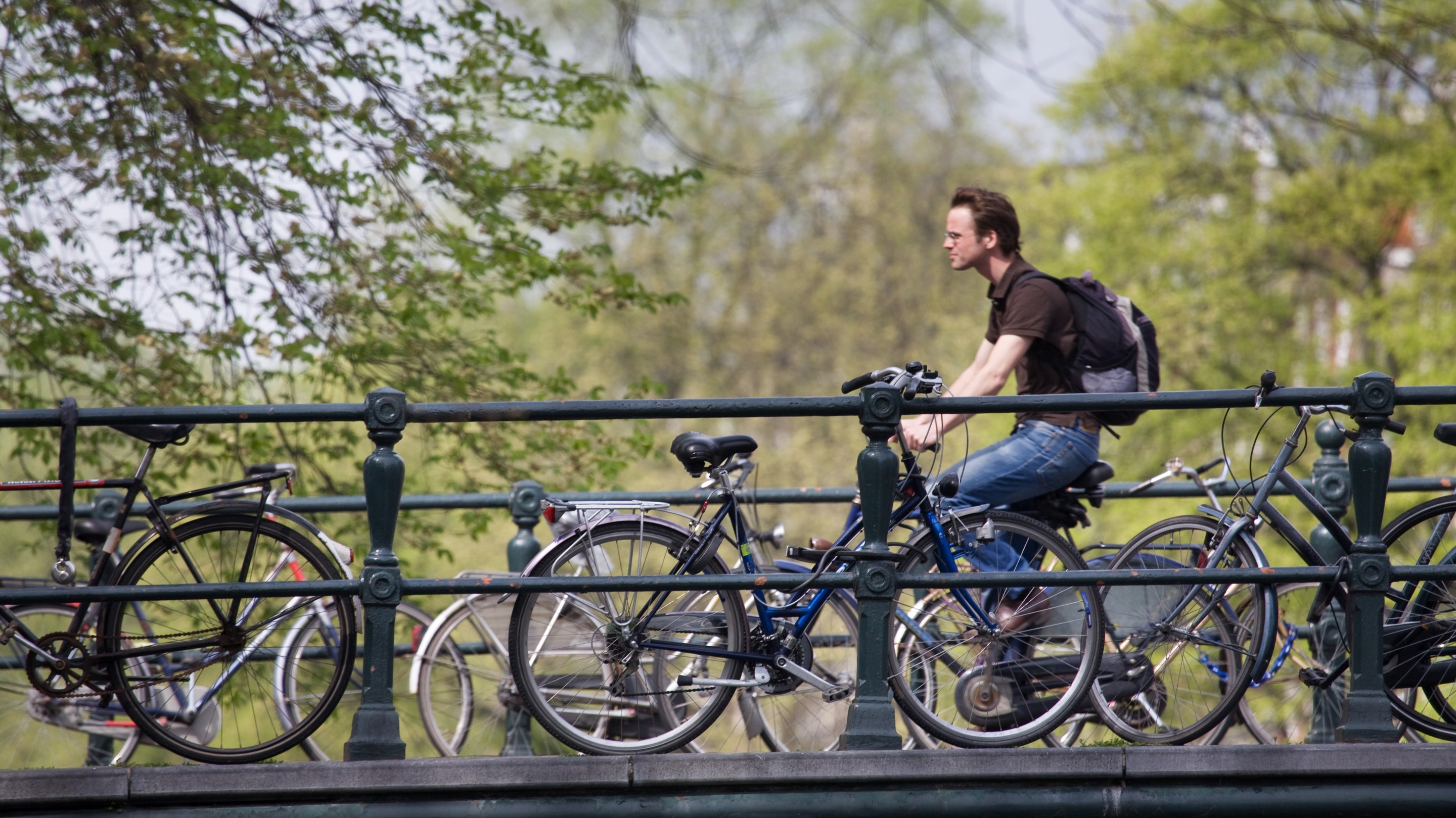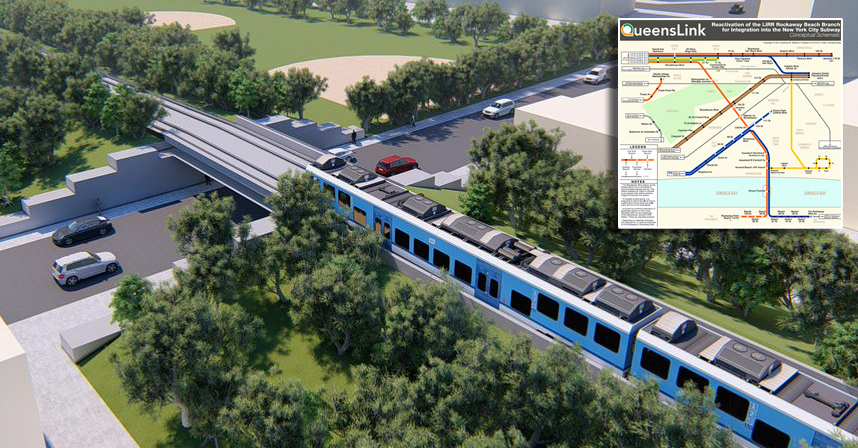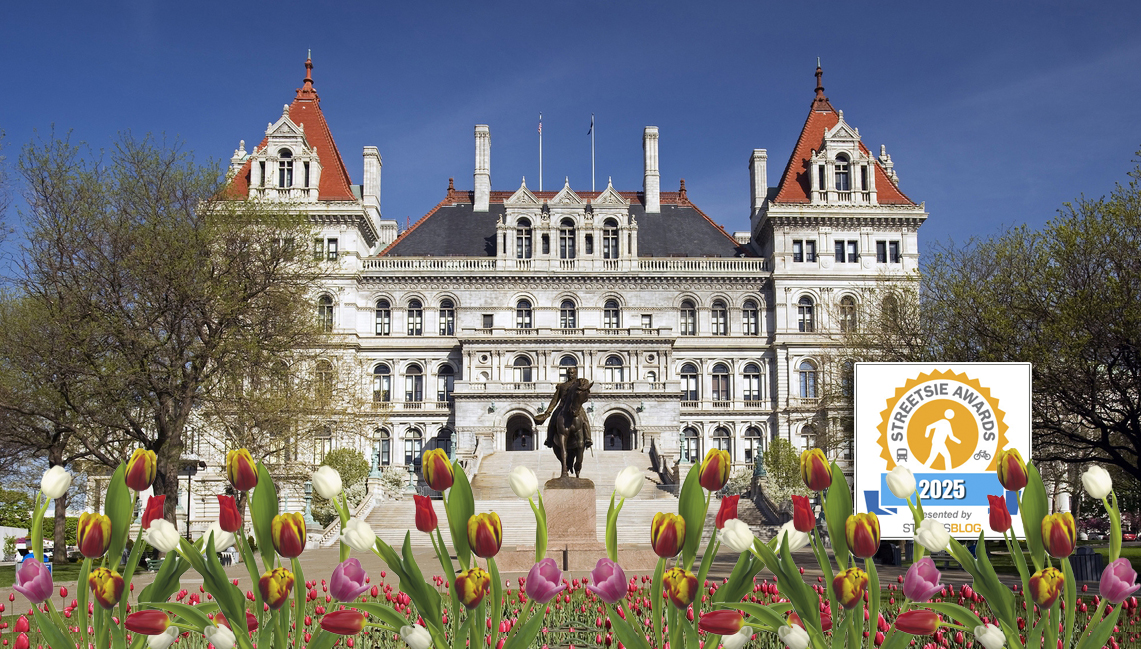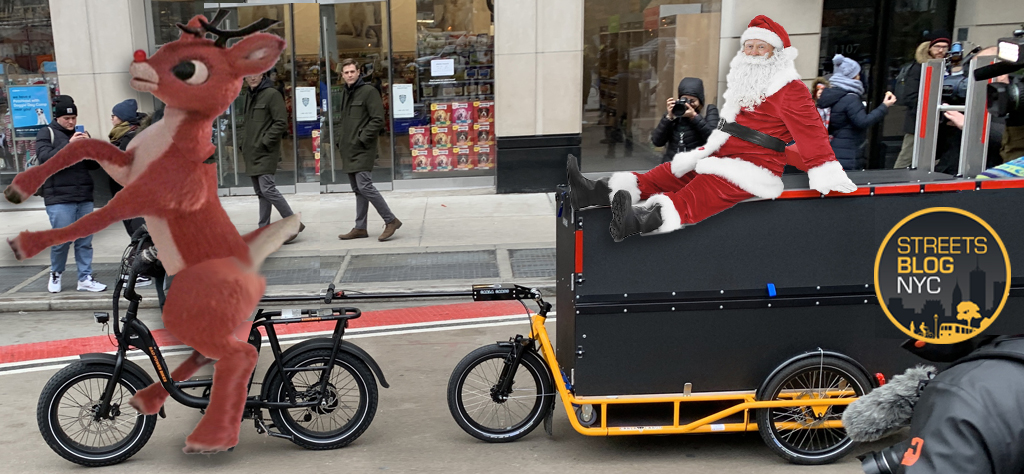Something surprised me on a recent visit to Amsterdam: The city famous for cycling recently passed laws to license e-bikes.
Unsurprisingly, I found myself comparing the Dutch laws to proposed legislation in New York City to mandate e-bike license plates and crack down on e-bike riders. The difference is in the streets: Amsterdam’s new laws exist in a transportation context the puts bikes on more or less equal footing with cars. The city's biking- and walking-friendly streets expose the hypocrisy of Mayor Adams and NYPD Commissioner Jessica Tisch’s recent moves to bring the enforcement gauntlet down on e-bike riders without making significant changes to city streets — and enforcement can't fix the problems of car-first design.

To be fair, Amsterdam isn't a 1-to-1 comparison: Fietsersbond, the country’s premier bike union, and the Dutch parliament pushed for regulations for “speed pedelecs,” or fat bikes, e-bikes with wider wheels that can go up to 28 mph. They are the more powerful Dutch “class” of e-bike versus the standard class that typically has a 16 mph speed cap. If the Dutch system for licensing applied in New York, some of our faster class 1 and all of our class 2 & 3 e-bikes would be licensed, as they can reach speeds up to 20 and 25 mph respectively.
Speed pedelecs have grown popular in the Netherlands, to about half of all new bike sales in the country. However, speed pedelec users' demographics differ slightly from their e-bike counterparts in New York City. Most users in Amsterdam are younger adults or older teenagers seeking faster micromobility options. The city lacks a massive bike-share system like Citi Bike, meaning most speed pedelecs on Amsterdam streets are for personal use.
Fietsersbond’s rationale for licensing speed pedelecs echoes the arguments we hear in New York — that speed pedelecs are bigger and faster, and riders routinely ignore the rules of the road, posing a danger to cyclists and pedestrians alike.
A difference of infrastructure
But Amsterdam is the international gold standard of bike infrastructure, thanks to five decades of advocacy, planning and policymaking. The city’s robust network of dedicated cycle paths, bike parking and other elements creates a foundation for safe cycling while maximizing pedestrian safety. It’s one of the primary reasons why 36 percent of trips in the city happen by bike. That, in turn, establishes safety in numbers. The more people walking and biking, the more drivers must accommodate their presence. Safety in numbers and robust infrastructure create a feedback loop: As safety improves, more people feel comfortable biking, leading to more people biking, strengthening safety in numbers, encouraging more people to bike, and so on.
Amsterdam’s infrastructure is also better designed. While most of the Dutch metropolis’s bike lanes are protected, they aren’t parking-protected like in the Big Apple. Instead, Amsterdam typically uses grade-separation, concrete strips, curbs, or greenery to separate cyclists from drivers. The on-street parking that does exist is usually in small segments, paired with physical barriers, or positioned next to shared lanes where cyclists and drivers cohabitate. These intentional design choices prioritize visibility; everybody sees each other, reducing the risk of crashes.
However, the most important element to Amsterdam’s street safety is how the city regulates cars. It helps that less than 20 percent of trips in the city are by car, and city leaders want to reduce the number of vehicles even more. The European Union’s human-centric car manufacturing regulations are also key. Their guidelines emphasize pedestrian safety standards, meaning smaller, shorter, and lighter cars with greater visibility than their American counterparts, reducing the rate and severity of crashes. Amsterdam’s 18 mph speed limit on most streets further bolsters safety, as the chance of severe injury from crashes is just 14 percent at that speed; At New York City’s 25 mph limit, the chance is more than double at 32 percent.
Drivers in Amsterdam have also contributed heavily to enhancing cyclist and pedestrian safety. Throughout my stay in Amsterdam, I found Dutch drivers were generally slower, more patient, and more predictable than American drivers. They provided more space when driving behind cyclists and yielded longer and farther away when pedestrians and cyclists had the right of way. This more respectful demeanor makes sense when considering the prevalence of cycling even amongst drivers. A member of the Fietsersbond who spoke to me explained that most people who drive still bike regularly, so they understand what it’s like to be inside and outside a car. Drivers are so cognizant of cyclists that when the city renovates narrower streets with unprotected bike lanes, officials often remove those lanes altogether, opting instead for a shared lane, because drivers have demonstrated their ability to coexist with cyclists.
Here in New York, drivers pose the biggest threat to pedestrian and cycling safety and the most significant deterrent to more people choosing to bike. Amsterdam has a similar story: Before World War II, biking constituted 80 percent of trips in the city. The adoption of cars caused that figure to drop below 25 percent by the 1970s. Through regulatory and infrastructural changes, with the help of some cultural adjustments, the city significantly reduced the danger posed by cars, resulting in a cycling resurgence. Cars killed only 59 people in the Netherlands last year, compared to 112 deaths in New York City. Additionally, cars have been responsible for only 42% of cyclist fatalities in the Netherlands over the past five years. By providing safe infrastructure for micromobility and designing streets that protect pedestrians, the Dutch had already made great strides in advancing e-bike safety before the recent regulatory push, and instead of viewing them as a nuisance to rein in, the Dutch view them as a key pillar of their climate and transportation goals, requiring necessary regulations for proper integration.
There are still concerns surrounding Dutch e-bike laws, many similar to the ones advocates invoke in New York. First, mopeds are common in Amsterdam, and the new speed pedelec laws classify e-bikes as mopeds. Fietsersbond has acknowledged mopeds as a separate challenge, and the union rep I spoke with admitted that equating the two could result in some slight modal shifts, incentivizing larger, faster, and even gas-powered vehicles, undermining the safety in numbers. The Netherlands also has a history of police discrimination, raising concerns around inequitable enforcement. The country has made some inroads with police reform and accountability, but the problem does persist. The Dutch approach may also introduce a legislative liability. Since speed pedelecs are visibly distinct, the new laws target manufacturing standards. A researcher from the AMS Institute theorized that such a framework opens the door for loopholes, enabling manufacturers to alter their designs to evade the rules. However, when you consider the decades of work the Dutch have put in towards advancing micromobility, those potential drawbacks become a much smaller concern, even at their worst.
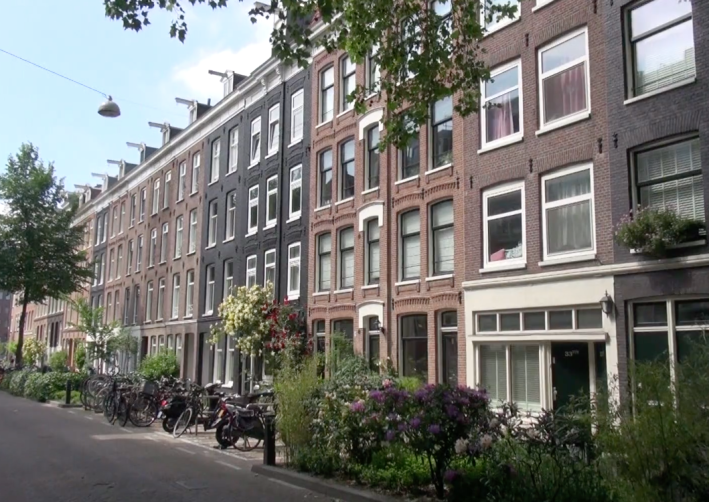
However, the most critical thing Fietsersbond has demonstrated in its efforts is that infrastructure and licensing are not mutually exclusive.
Think of any infrastructure action DOT could implement — universal bike lanes, bike parking, physical daylighting, open streets, Deliverista hubs, e-bike charging, Citi Bike expansion — DOT could implement all of those infrastructure changes to their heart's content, and none of that would stop the legislature from passing e-bike regulations. Fietsersbond’s e-bike licensing campaign never stopped them from pursuing continued bike infrastructure expansions, as the union won a new bike bridge to Amsterdam Noord and the aforementioned 30 kph speed limit while pursuing e-bike regulations. And it’s not just Amsterdam: Paris has also recently implemented a set of micromobility regulations of their own. Simultaneously, they have established their own world-class bike lane network while introducing new restrictions on private vehicles that are more aggressive than Amsterdam’s regulations.
Let’s go further: Data proves street redesigns to accommodate safe cycling improve pedestrian safety. Since the push for e-bike regulation is for pedestrian safety, one could argue that licensing and infrastructure complement each other. There should be no reason for licensing supporters to oppose e-bike accommodations; yet, among many supporters, that opposition is pervasive.
Licensing supporters on the Upper East Side have lamented about the DOT’s 15 mph re-timing of traffic lights for bikes on Third Avenue (that has, ironically, made it harder for e-bikes to speed or run red lights). Some Williamsburg residents convinced DOT to remove part of the new Bedford Avenue bike lane after several gruesome crashes, but overlook similarly gruesome car crashes or the illegal parking that contributed to many bike lane crashes. Former Gov. Cuomo has embraced blanket registration while implying he’d be open to removing bike lanes. NYPD Commissioner Tisch has escalated to criminal summonses for e-bikes without reciprocating that escalation for cars. Mayor Adams is introducing a 15 mph speed limit for e-bikes, but has refused to implement Sammy’s Law, which would lower car speed limits to 20 mph.
These contradictions are the main difference between licensing efforts in Amsterdam and New York. Arguably, the resistance to bike infrastructure and indifference to vehicular mayhem, paired with this campaign, is a bigger red flag than even the most stringent legislation. Those sentiments fly in the face of pedestrian safety, and make it appear like the goal is less about accountability and safety and more about reducing and discouraging micromobility altogether.
Not every e-bike regulation proposal is so draconian. Representatives like State Sen. Brad Hoylman-Sigal (D-Manhattan), Council Member Gale Brewer, and Comptroller Brad Lander have proposed more nuanced strategies of e-bike regulation, while simultaneously advocating for improved bike infrastructure and greater accountability for drivers. Their sentiments align with the Dutch model of balancing accommodation with regulation while clearly demonstrating the hypocrisy of Mayor Adams, Gov. Cuomo, Commissioner Tisch, and others’ refusal to commit to that balancing act. But if it is condemnable for licensing supporters to oppose infrastructure improvements with no basis, then it’s hypocritical for street safety advocates to resist regulations. There is a good-faith path for e-bike regulation, but we must embrace those sensible solutions to counteract Adams administrations wanton war on cyclists.
If Bike Town can regulate e-bikes in good faith, so can we.
